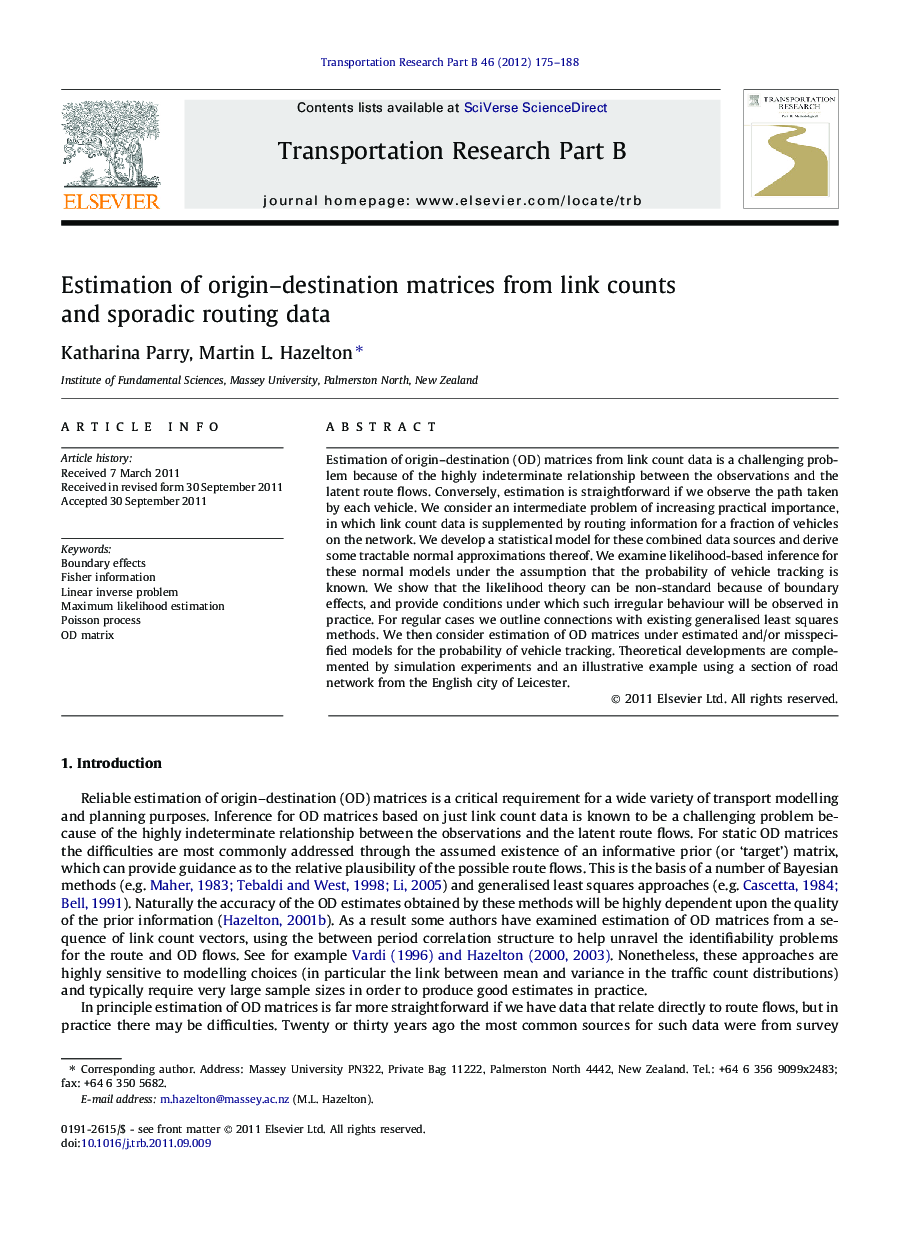| Article ID | Journal | Published Year | Pages | File Type |
|---|---|---|---|---|
| 1132194 | Transportation Research Part B: Methodological | 2012 | 14 Pages |
Estimation of origin–destination (OD) matrices from link count data is a challenging problem because of the highly indeterminate relationship between the observations and the latent route flows. Conversely, estimation is straightforward if we observe the path taken by each vehicle. We consider an intermediate problem of increasing practical importance, in which link count data is supplemented by routing information for a fraction of vehicles on the network. We develop a statistical model for these combined data sources and derive some tractable normal approximations thereof. We examine likelihood-based inference for these normal models under the assumption that the probability of vehicle tracking is known. We show that the likelihood theory can be non-standard because of boundary effects, and provide conditions under which such irregular behaviour will be observed in practice. For regular cases we outline connections with existing generalised least squares methods. We then consider estimation of OD matrices under estimated and/or misspecified models for the probability of vehicle tracking. Theoretical developments are complemented by simulation experiments and an illustrative example using a section of road network from the English city of Leicester.
► We estimate trip matrices from link counts and sporadic routing data. ► We examine likelihood based methods, and analyse regularity conditions. ► We elucidate connections with generalised least squares approaches. ► We consider estimation of proportion of tracked vehicles. ► We derive standard errors and confidence intervals for estimates.
